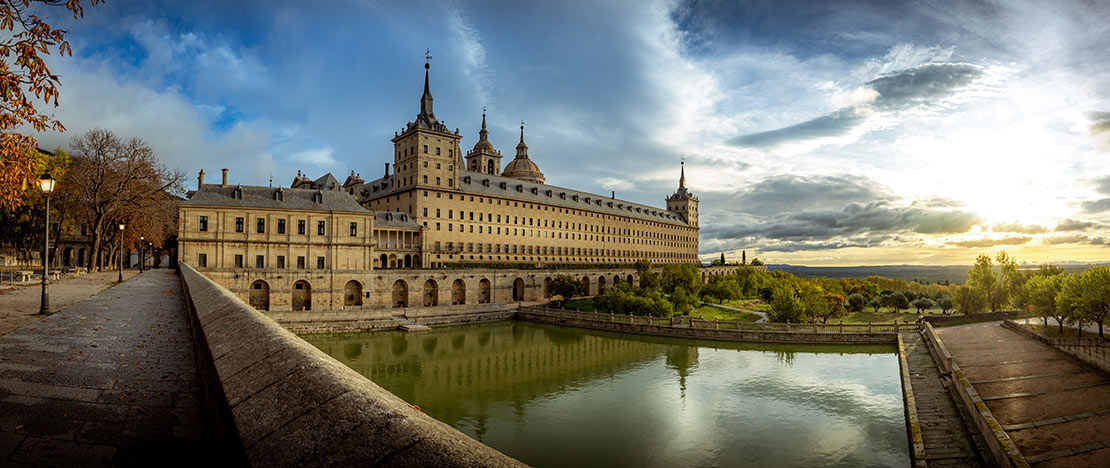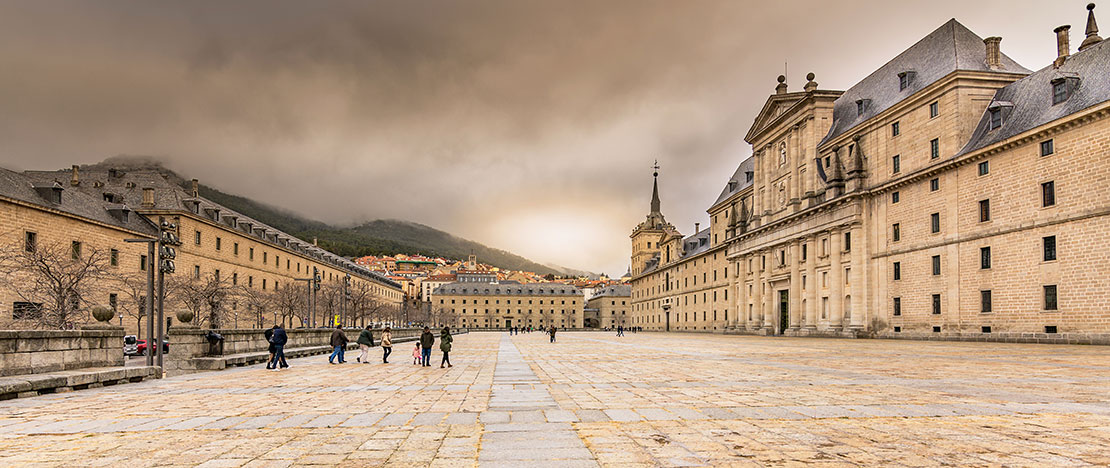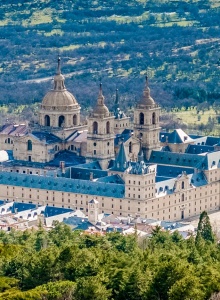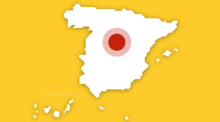MORNING
You can spend the first part of the day discovering the Monastery of San Lorenzo de El Escorial, one of the most famous monuments in Spain, and also the Casita del Infante (Infante’s House) and the city’s old quarter.
Arrival in San Lorenzo de El Escorial
Set off early to make the most of the trip. The easiest option is bus route 664, the most direct, which leaves you about 200 metres from the Monastery (you just have to walk down Calle Juan de Toledo). The railway station is over a kilometre from the town, so it is best left for the return leg of the journey. If you do decide to arrive by train, you can walk uphill to San Lorenzo de El Escorial or get the local bus.
Royal Monastery of San Lorenzo de El Escorial. The classic tour
As the Tourist Office is opposite the entrance to the Monastery, take a moment to see the visitors’ centre and get some information on routes, restaurants and local history, or entertain the children with games.
The next stop is the iconic Monastery of San Lorenzo de El Escorial. A majestic granite building looms over you, evoking another era, when El Escorial was the political centre of an empire. Of course, as well as a monastery, this huge museum also houses royal tombs, a palace and a basilica. Let’s go in and discover what was once called the Eighth Wonder of the World.After exploring every corner of the monastery, it’s time to pick up a souvenir in the gift shop and have a break in the café next to the entrance.
Jardines del Fraile garden and Casita del Infante
As you leave and cross the stone forecourt of the monastery, you’ll see other buildings, the Casas de Oficios or workshops and the Casa del Infante and the Casa de la Reina, the Queen’s and Infante’s houses, which are all very photogenic. At the end of the western façade, on the right to the main entrance, there is a small gate leading to a garden, Los Jardines del Fraile. The extensive parks and decorative pond will make you feel as if you were in the 16th century.

Here, your route will vary depending on the time of year. If you carry straight on along Paseo de Carlos III for about 15 minutes (towards the Ávila road, which is signposted) you will come to a smaller palace, the Casita del Infante, and its gardens. It’s worth it just for the view of the landscape of La Herrería. Now take Calle Leandro Rubio to the end of the street, where you will find the Casa de Jacometrezzo, the oldest house in the town.
Historic site. A journey through tradition
The sights are close together in the historic quarter of San Lorenzo de El Escorial, making for a pleasant stroll while you admire the colourful squares and enjoy the friendly atmosphere. Your best bet is to follow the courtyard on the north side of the Monastery and continue up to the central Calle Floridablanca. As you walk along this street you’ll see historic buildings (each with an informational plaque), like the Casas de Oficios or workshops to your left, and the Reales Cuarteles (stables) and Real Coliseo de Carlos III (theatre) to the right. In summer, you’ll find stands along the way selling horchata and ice creams, where you can stop for a rest.

After that, take a gentle stroll along three parallel streets, Calle Reina Victoria, Calle del Rey and Calle Juan de Leyva, and enjoy the local atmosphere. Here there are plenty of shops selling crafts, ceramics and antique books if you want to buy a present. Along the way 18th century heritage buildings appear, like the Casa de las Columnas or the Cocheras del Rey (at the end of Calle Juan de Leyva). The latter houses a charming museum which is worth a visit.A tip: We recommendable visiting the bookshop connected to the museum to buy gifts, such as a medal of San Quintín. Before lunch, don’t forget to buy a traditional local sweet, like candied violets or the tasty bizcochelas (sponge cake with chocolate and egg yolk).
Lunch in the old quarter
After a busy morning, now is the time to stop in any of the bars or restaurants in the historic centre of town for traditional dishes such as beef sirloin or T-bone steak, roast meats or cocido stew. Go downhill via Calle Patriarca to come out on Calle Floridablanca and have lunch in a place with views of the Monastery. However, many streets in the historic quarter (San Antón, Camino Horizontal, Plaza San Lorenzo) are dotted with restaurants and bars, if you would rather have a pork chop or some Iberian ham. You’ll enjoy the tasty food as much as the monumental surroundings. And the prices are pretty reasonable.










